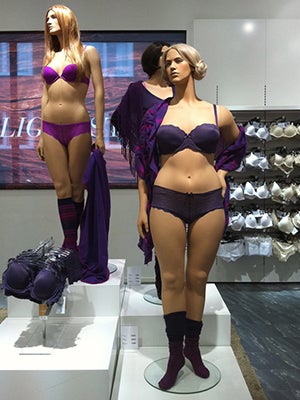
With more than one-third of U.S. adults classified as obese, according to the CDC, and the average American woman wearing a size 14 or larger, it is no surprise that, according to
Business Insider, those labeled as "plus-size" account for approximately 67% of the apparel-purchasing population, bringing in a retail revenue of nearly $16 billion. Therefore, it could be financially foolish to not display mannequins of larger sizes, even within non-specialty stores.
Plus-size sales are poised to jump 5.2% annually in the next five years, while overall apparel sales will only climb a modest 2.7%, according to research firm IbisWorld. The category is expected to hit $9.7 billion by 2017, up from an estimated $7.5 billion this year and $6.6 billion in 2009.
“The issues that plus-size women face in store translate into the biggest opportunity for brands and retailers to grow their businesses today,” stated Marshal Cohen, chief industry analyst of The NPD Group, Inc. “There are so many consumers who wear at least one item that is plus size, and yet the market is dramatically underserved.”
Photo: Courtesy of SwedishMannequins